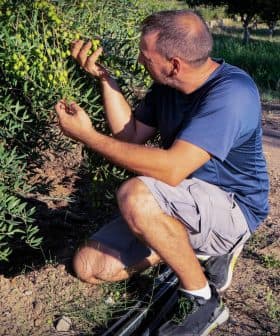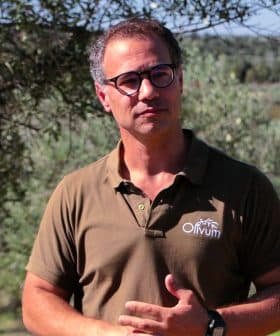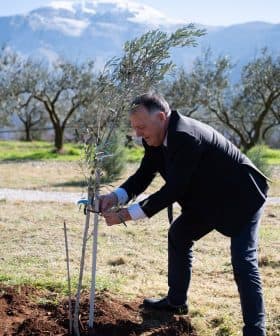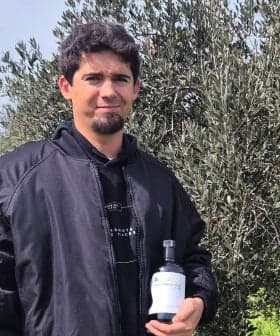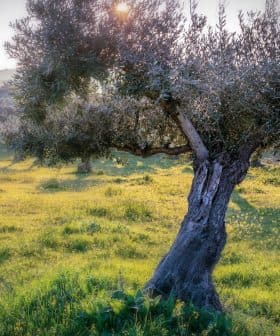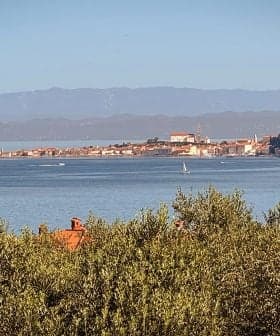Dalmatian Agronomists Experiment with New Pruning Methods
Carrying scissors in one hand and a saw in the other, Stjepan Dević prunes a tree in five minutes.
 Stjepan Dević
Stjepan Dević  17.4K reads
17.4K readsIn Croatian olive groves, the new trend is pruning trees into a polyconic vase, especially in Dalmatia where the benefits of this form of cultivation are being discovered. This method facilitates pruning, protection, and harvesting, creating an airy and sunny canopy that allows for more even ripening of fruits. Agronomist Stjepan Dević and his partner are leading the way in demonstrating and implementing the polyconic vase method, which increases efficiency in olive tree maintenance and production in Croatia.
Pruning in Croatian olive groves is in full swing, and the new trend is trimming trees into a polyconic vase.
This is especially true in Dalmatia, where – unlike Istria and Tuscany – the advantages of this form of cultivation are just being discovered.
“The advantages are multiple: it facilitates pruning, protection and harvesting,” said Šime Marcelić, an assistant professor at the University of Zadar’s department of ecology, agronomy and aquaculture. “The canopy is airy and sunny. The fruits ripen more evenly.”
See Also:Researchers Unveil the Latest Technologies to Help Harvest and Produce Olive OilThe type of pruning involves trimming excess branches on trees between 80 and 120 centimeters high with three to four primary branches. This creates a smaller fertilization area suitable for a grove density of six to seven meters.
Traditional olive tree pruning results in a free-growing form; the inside of the crown dies and does not sprout its reproductive elements. Instead, these crucial parts of the tree grow on the tips of higher branches.
Over time, an “olive rainforest” is created when the highest branches of the trees start to intertwine.
In Northern Dalmatia, apart from a few exceptions, the polyconic vase is not used, even in newer plantations.
However, this is starting to change and has been spurred on by a recent demonstration and workshop held by the Association of Olive Growers of Zadar County.
Among the experts is the young agronomist Stjepan Dević, 29, from Sukošan near Zadar.
“I am grateful to Marcelić,” Dević said. “He taught me pruning and made me fall in love with olive trees.”
After completing his undergraduate studies at the University of Zadar, he worked for a few years before returning to get his Master’s degree in agrotechnical sciences.
Five years ago, he founded an olive grove with 300 trees on his grandfather’s property in Sukošan. He also bought an old olive grove with about 40 Oblica trees, which he grafted onto Oštrica, Puljka and other native varieties. “It was a miracle; they reproduced like crazy,” he said without hiding his satisfaction.
Dević also became a certified taster, started working in horticulture, and officially registered his landscape management business, Hortus Agro, in 2022.
Along with providing advice, his main job is arranging and maintaining gardens around tourist villas and facilities. “When the pruning of the olive trees is finished, I throw myself into the gardens,” he said.

Stjepan Dević and Toni Družijanić
Dević and his pruning partner, Toni Družijanić, demonstrated the polyconic vase method for Olive Oil Times at a grove near Zadar, reconstructing the crowns and adapting them to the new cultivation form.
According to Dević, a polyconic vase creates the best possible ratio of wood to leaf mass. He and Družijanić are pruning 120 trees in the grove into a polyconic vase.
“If the pruning of one tree takes more than 15 minutes, it means that something is being done incorrectly,” said Družijanić, a student at the University of Zadar.
Appropriate equipment is also required to work quickly and with quality: good sneakers, gloves, a brimmed hat and glasses. “A stab in the eye from the spear tip of an olive leaf can be fatal,” Dević said.
The pair use the most modern tools for pruning: manual and extended electric shears and a one-handed battery saw. Each one carries scissors in one hand and the saw in the other. In five minutes, each one can adequately prune one tree.
Dević and Družijanić prune 100 to 150 olive trees daily, turning “olive deserts” into polyconic vases. Before, when they worked only with manual scissors, they barely cut 15 to 20 a day, finishing each one “dead tired and worn out,” especially since each tool must be clean and disinfected before and after pruning.
According to Dević, pruning helps reduce the load on the tree, aerates the crown and balances out wood and leaf mass.
It is best to start pruning in the second half of March when it is possible to see which buds are leafy or flowery, meaning they will bear fruit.

There are numerous advantages of the polyconical vase cultivation form, say the young agronomists.
Dević recommends pruning at the right time. Pruning too early “wakes the tree up,” making it vulnerable to early spring cold snaps.
Like other agronomists, Dević reiterates the importance of balancing wood and leaf mass. The tree should only be a skeleton that carries the leaf mass.
The next important thing is light. Every part of the canopy should be illuminated fully, allowing uniform ripening. The fruits from top to bottom are in the same state of ripeness, instead of the fruit on the lower branches being unripe as the fruit at the top ripens.
Dević said the shape of the polyconic vase enables faster and simpler manual harvesting, especially with shakers.
Other advantages of polyconic vase pruning cited by the agronomist included reduced water needs for each tree and more efficient use of soil nutrients.
Furthermore, it is easier to carry out protection and foliar fertilization on trees pruned into conical vase form. The spray more easily disperses throughout the tree, even inside the crown.
Dević and other polyconic vase pruning evangelists argue the practice should be used more widely throughout Croatia to make the country’s olive growers more efficient.
While the first year after pruning usually sees a yield reduced by 15 to 20 percent, the increased efficiency in the future more than compensates for the first low harvest.
Share this article


